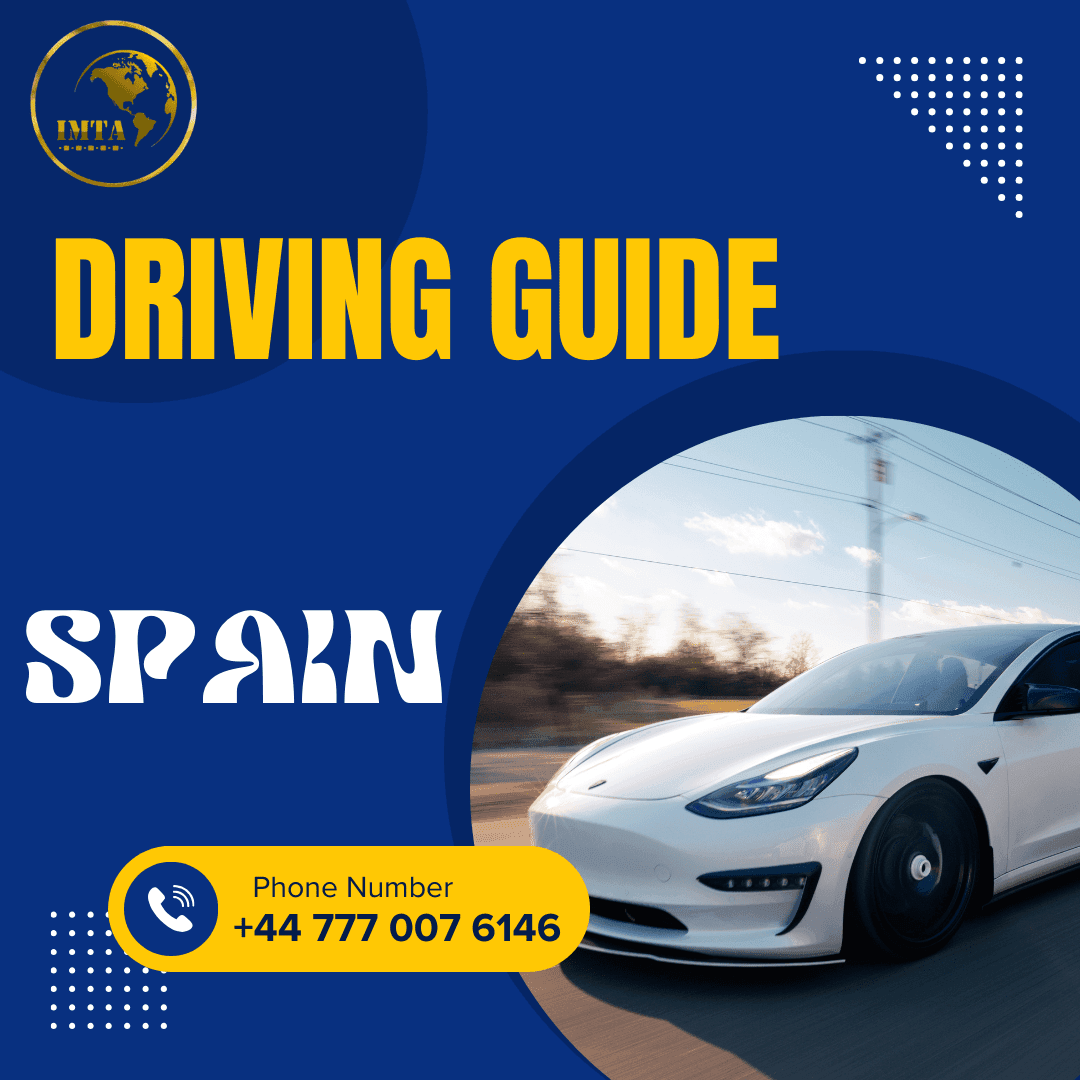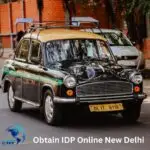Spain International Drivers Licence
 When driving in Spain, it’s important to be aware of the specific rules and regulations, whether you’re a visitor or a resident. Here’s a comprehensive guide to driving in Spain: Driving Guide To Spain, IDP apply online Spain, International Driving Permit Spain, International Driving licence Spain, International Drivingicense Spain, International Driving license Spain
When driving in Spain, it’s important to be aware of the specific rules and regulations, whether you’re a visitor or a resident. Here’s a comprehensive guide to driving in Spain: Driving Guide To Spain, IDP apply online Spain, International Driving Permit Spain, International Driving licence Spain, International Drivingicense Spain, International Driving license Spain
1. Driving Requirements in Spain:
For Visitors:
– Visitors from EU/EEA countries can use their home country driver’s license without any additional documentation.
– Non-EU visitors (including those from the U.S. and Canada) must carry an International Driving Permit (IDP) along with their valid driver’s license from their home country. The IDP serves as a translation of your license.
– The minimum driving age in Spain is 18 years, but rental car companies may impose higher age limits (usually 21 or 25) and may charge extra for drivers under 25.
For Residents:
– EU residents can continue using their home country’s driver’s license. After two years of residence, they must meet local medical standards and register their license with Spanish authorities.
– Non-EU residents need to exchange their foreign license for a Spanish one, depending on reciprocal agreements between Spain and the country of origin. If there’s no agreement, they may need to take a Spanish driving test.
2. Driving Laws in Spain:
General Rules:
– Spain drives on the right-hand side of the road.
– Seat belts are mandatory for all vehicle passengers.
– Children under 135 cm in height must sit in a suitable child seat in the back.
– It is illegal to use a mobile phone while driving unless you have a hands-free system.
Speed Limits:
– The speed limits are: 50 km/h in urban areas, 90 km/h on secondary roads, and 120 km/h on highways (autovías and autopistas).
– Speeding fines are common, and speed cameras are widely used across the country.
Alcohol Limits:
– The legal blood alcohol limit in Spain is 0.05% for general drivers and 0.03% for commercial and new drivers (with less than 2 years of driving experience).
– Penalties for drunk driving are severe, including fines, license suspension, and possible imprisonment.
3. Essential Documents:
– Driver’s license (valid for Spain or with an IDP if required).
– Vehicle registration document (V5C) if you own the car.
– Proof of insurance (at least third-party coverage is mandatory).
– MOT certificate if the vehicle is more than four years old.
4. Driving Tips and Etiquette:
Tolls:
– Spain has both free roads (autovías) and toll roads (autopistas). Tolls can be paid by cash, credit card, or using an electronic toll device (Via-T).
– Toll roads are generally less congested than free highways and are well maintained.
Roundabouts:
– Traffic already on the roundabout always has the right of way. Make sure to yield to traffic coming from the left when entering.
Parking:
– Finding parking in urban areas can be challenging. Look for “zona azul” (blue zones) where paid parking is allowed for a limited time.
– Illegally parked cars may be towed or fined.
 Fuel:
Fuel:
– Gasoline (gasolina) and diesel (gasoil) are readily available at service stations, which are usually self-service. Unleaded petrol is the most common type of fuel.
– Credit and debit cards are widely accepted at fuel stations.
Driving Conditions in Spain:
Road Quality:
– Spain has a well-maintained road network, especially in urban areas and on major highways. Rural roads may be narrower and less maintained, but they are generally in good condition.
Weather Conditions:
– Southern Spain can get very hot in the summer, while mountainous areas can experience snow and ice in winter.
– Always check road conditions if driving in mountainous or rural areas.
Traffic:
– Traffic congestion can occur in major cities like Madrid, Barcelona, and coastal regions during holiday periods.
– Rush hours in major cities are typically between 8:00-10:00 AM and 6:00-8:00 PM.
Road Signs and Signals:
– Road signs in Spain follow international conventions, clearly marking speed limits, warnings, and directions.
– Traffic lights follow the standard red, amber, and green system. Always be mindful of pedestrian crossings, as pedestrians have the right of way.
– Stop signs are marked as “STOP”, and yielding is indicated by a triangle-shaped sign.
Emergency Numbers and Assistance:
– The emergency number in Spain is 112 for police, medical emergencies, or fire services.
– If you are involved in an accident, it is mandatory to call the police if there are injuries or if it involves a rental car.
– It is also required by law to carry a reflective vest and warning triangles in the car in case of a breakdown or accident.
Driving a Rental Car in Spain:
Renting a Car:
– You will need a valid driver’s license and, in some cases, an International Driving Permit (IDP) for non-EU visitors.
– Most rental companies require drivers to be at least 21 years old. There may be extra fees for drivers under 25.
– While rental cars typically come with basic insurance, consider purchasing additional coverage for full protection.
When driving in Spain, it’s important to be aware of potential fines and penalties. For instance, fines for traffic violations such as speeding, using a mobile phone, or not wearing a seatbelt can be issued on the spot. Foreigners are often required to make immediate payment. Keep in mind that fines can be reduced by 50% if paid within 20 days of the violation.
Additionally, for frequent toll road users, it’s recommended to consider getting a Via-T device (electronic tag) to allow for automatic payment and to expedite your journey. Also, certain cities like Madrid and Barcelona have established low emission zones with restrictions based on the environmental rating of your vehicle. It’s crucial to check these zones before entering.
While driving in Spain can be a delightful experience for exploring diverse regions and landscapes, it’s essential to adhere to local driving laws and regulations to ensure a safe and hassle-free journey. International Driving license Spain
What you need to rent a car, and how to rent one
As a tourist, you’ll most likely be renting a car (more on that in a bit) for your road trip. Even so, there are certain requirements that you’ll have to check off before you get into it.
- You have to get an International Driver’s Permit. Apply for it online or head to the office — we prefer doing it in person because the queue is pretty short during off-peak hours, and you can get it done on the same day. It’ll cost S$20 and is valid for one year from the date of issue.
- A valid local driver’s license. international driving licence online
- You have to be at least 21 years of age and have held your local licence for a year. A surcharge may be imposed for drivers under the age of 25.
- A passport for identification .
- A credit card in the driver’s name.
How to obtain an international driving permit

The process of obtaining an international driving license directly from an office can be quite challenging and time-consuming. The payment methods involved can also be complex. Therefore, it is recommended to consider applying for an international driving license from IMTA. The application process only takes around 10 to 15 minutes, making it a more efficient option for getting your international driving permit, International Driving license Spain
The necessary details required for the application of an International driving permit include:
– Full Name
– Email & Phone Number
– Current Address
– Place of Birth
– National Driver’s License Number
– National Driver’s License Issued Date & Expiry Date
– Picture of Driver’s License & Your Head Shot Photo for Your IDP
 Driving Guide To Spain, IDP apply online Spain, International Driving Permit Spain, International Driving licence Spain, International Driving license Spain, Driving Guide To Spain, IDP apply online Spain, International Driving Permit Spain, International Driving licence Spain, International Driving license Spain, IDP apply online Spain, International Driving licence Spain
Driving Guide To Spain, IDP apply online Spain, International Driving Permit Spain, International Driving licence Spain, International Driving license Spain, Driving Guide To Spain, IDP apply online Spain, International Driving Permit Spain, International Driving licence Spain, International Driving license Spain, IDP apply online Spain, International Driving licence Spain





